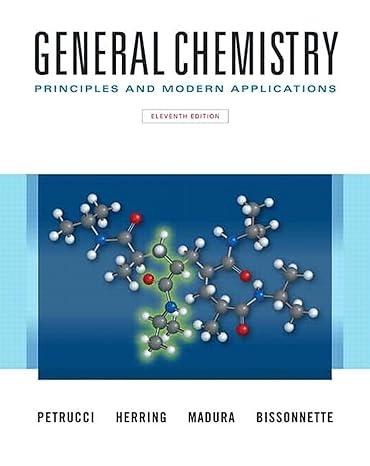Refer to Example 5-9. Suppose the analysis of all vinegar samples uses 5.00 mL of the vinegar
Question:
Refer to Example 5-9. Suppose the analysis of all vinegar samples uses 5.00 mL of the vinegar and 0.1000 M NaOH for the titration. What volume of the 0.1000 M NaOH would represent the legal minimum 4.0%, by mass, acetic acid content of the vinegar? That is, calculate the volume of 0.1000 M NaOH so that if a titration requires more than this volume, the legal minimum limit is met (less than this volume, and the limit is not met).
Example 5-9
Vinegar is a dilute aqueous solution of acetic acid produced by the bacterial fermentation of apple cider, wine, or other carbohydrate material. The legal minimum acetic acid content of vinegar is 4% by mass. A 5.00 mL sample of a particular vinegar is titrated with 38.08 mL of 0.1000 M NaOH. Does this sample exceed the minimum limit? (Vinegar has a density of about 1.01 g/mL.)
Step by Step Answer:

General Chemistry Principles And Modern Applications
ISBN: 9780132931281
11th Edition
Authors: Ralph Petrucci, Jeffry Madura, F. Herring, Carey Bissonnette





